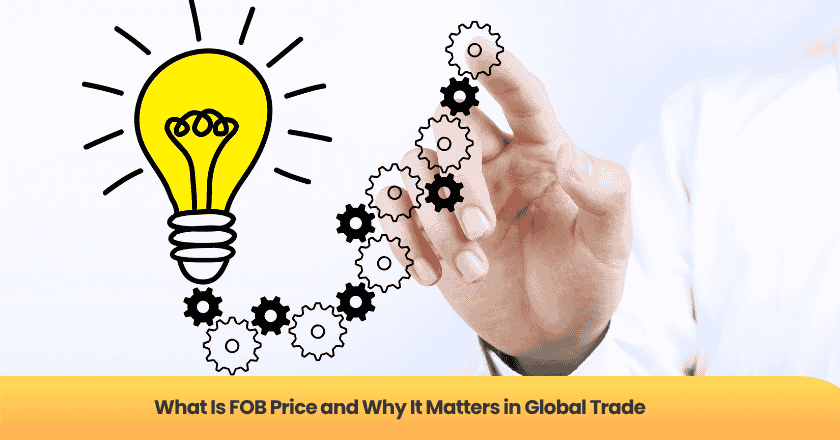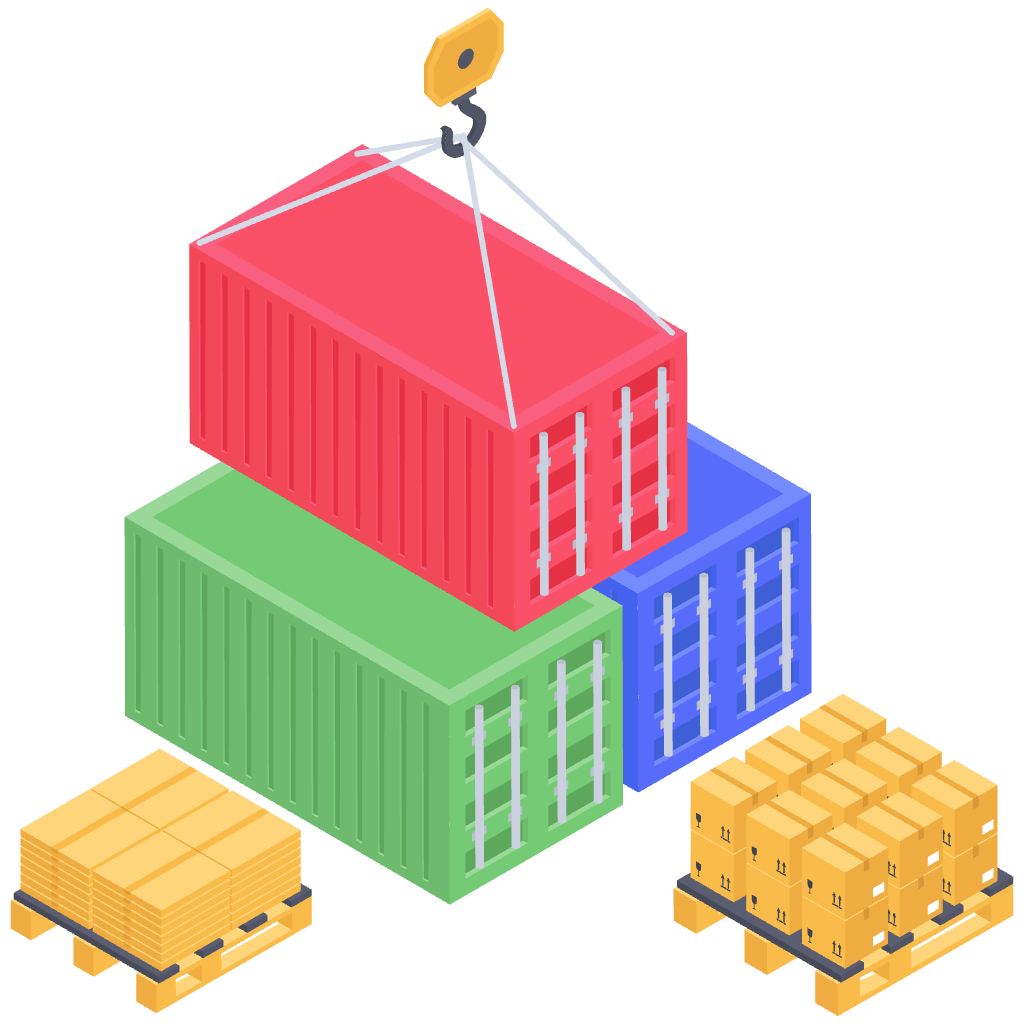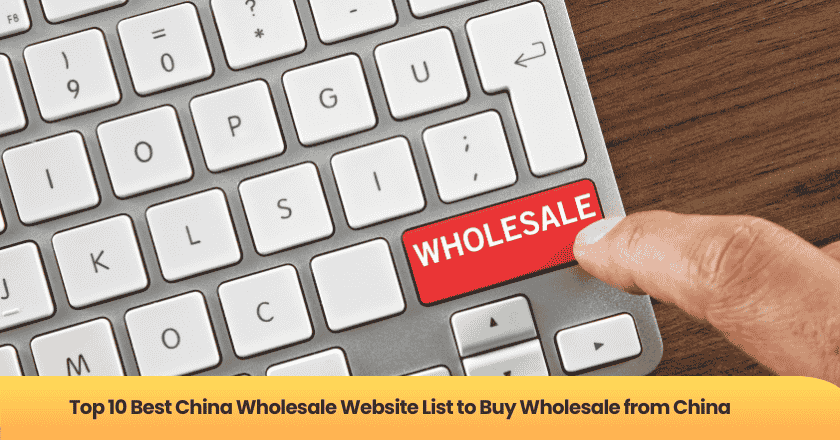
When I look at global trade, I always start with the question, what is FOB price? FOB stands for "Free On Board." This term shapes every shipment, defining who pays for what and when the risk shifts between buyer and seller. Knowing the definition of FOB price and its terms helps me avoid surprises in price, shipment responsibilities, and risk. Every FOB transaction depends on clear terms that affect shipment, price, and risk transfer. I rely on trusted sourcing solutions to help me navigate FOB terms and shipping terms, making each shipment and price negotiation more transparent.
Key Takeaways
- FOB stands for 'Free On Board' and defines when the seller's responsibility ends and the buyer's begins. Understanding this helps avoid confusion in shipping costs and responsibilities.
- Always clarify FOB terms in your purchase agreements. This practice prevents misunderstandings about who pays for shipping and when risks transfer.
- The FOB shipping point gives buyers more control over shipping costs. It allows negotiation of better rates but requires careful management of insurance and logistics.
- Comparing FOB with other terms like CIF and EXW helps determine the best option for your needs. FOB offers a balance of responsibility and control over shipping.
- Using sourcing solutions like NewbuyingAgent can simplify the FOB process. They help manage procurement, negotiate prices, and ensure quality, saving you time and money.
What Is FOB Price
FOB Meaning
When I first started learning about international shipping, I kept asking myself, what is fob price? The term FOB stands for "Free On Board." In global trade, fob defines the point where the seller's responsibility ends and the buyer's responsibility begins. I use fob to determine who pays for shipping, who handles export duties, and when the risk transfers from seller to buyer. Every time I negotiate a contract, I check the fob terms to avoid confusion about costs and responsibilities.
Tip: Always clarify fob terms in your purchase agreement. This helps prevent misunderstandings about who pays for what during shipping.
I notice that many people confuse fob with other shipping terms. When I ask what is fob price, I focus on the price of goods at the port of shipment. The seller covers all costs up to that point. The buyer takes over once the goods are loaded onto the vessel. This clear division helps me plan my logistics and budget more accurately.
Free On Board Explained
I often explain to new buyers that free on board is more than just a shipping term. When I look at what is fob price, I see it as the total cost of goods delivered to the port, ready for export. The seller pays for production, packaging, and inland transport to the port. Once the goods are on board the ship, the buyer assumes all risks and costs, including ocean freight, insurance, and import duties.
Here's a simple table that shows how responsibilities shift with fob:
| Stage | Seller Pays/Handles | Buyer Pays/Handles |
|---|---|---|
| Production | √ | |
| Inland Transport | √ | |
| Export Customs | √ | |
| Loading on Vessel | √ | |
| Ocean Freight | √ | |
| Insurance | √ | |
| Import Customs | √ | |
| Delivery to Buyer | √ |
When I ask what is fob price, I always check if the price includes all seller-side costs up to the loading point. This helps me avoid unexpected charges later. I recommend that buyers and sellers agree on fob terms before finalizing any deal. This practice reduces disputes and makes the shipping process smoother.
I find that understanding what is fob price gives me more control over my supply chain. I can negotiate better rates, manage risks, and ensure my goods arrive safely. For anyone involved in global trade, knowing fob terms is essential.
FOB Responsibilities
Seller's Role
When I work with international shipments, I always check the seller's responsibilities under fob origin terms. The seller must prepare the goods for export. This includes packaging, labeling, and handling all documentation. The seller arranges transportation from the factory to the port. At the port, the seller clears the goods through export customs. The seller loads the goods onto the vessel at the fob origin point. I rely on the seller to ensure the goods meet all export requirements before the risk transfers.
Note: The seller's job ends once the goods are safely loaded at the fob origin. Any issues after this point become the buyer's responsibility.
Buyer's Role
As a buyer, I take over once the goods reach the fob origin. My responsibilities start with arranging ocean freight. I handle insurance for the shipment. I also manage import customs clearance when the goods arrive at my country. Delivery from the port to my warehouse falls under my control. I monitor the shipment closely after the fob origin to avoid delays or extra costs.
Here is a quick checklist I use for buyer responsibilities at fob origin:
- Book ocean freight
- Arrange insurance
- Prepare import documents
- Track shipment after loading
- Organize final delivery
Risk Transfer
Risk transfer is a critical part of fob origin agreements. I pay close attention to the exact moment when risk moves from seller to buyer. At fob origin, the risk shifts as soon as the goods are loaded onto the vessel. If damage or loss occurs after this point, I am responsible. Before loading, the seller bears all risks. This clear division helps me plan for insurance and logistics. I always confirm the fob origin details in my contracts to avoid confusion.
Tip: Always double-check the fob origin point in your shipping documents. This ensures you know when your responsibilities begin.
FOB Shipping Point
Cost Implications
When I negotiate international shipments, I always ask about the fob shipping point. The fob shipping point determines who pays for each part of the journey. If the contract states fob shipping point, the seller covers costs until the goods reach the fob shipping point. After that, I pay for everything. The fob shipping point affects my budget and planning. I compare fob shipping point with fob destination to see which option fits my needs.
I use a simple checklist to track costs at the fob shipping point:
- Seller pays for production, packaging, and transport to the fob shipping point.
- I pay for ocean freight, insurance, and delivery after the fob shipping point.
- Customs fees depend on the fob shipping point and fob destination.
I find that the fob shipping point gives me more control over shipping costs. If I choose fob destination, the seller pays for more steps, but the price is higher. The fob shipping point lets me negotiate better rates with carriers. I always ask for a breakdown of costs at the fob shipping point and fob destination.
| Stage | FOB Shipping Point | FOB Destination |
|---|---|---|
| Seller’s Costs | √ | √ |
| Buyer’s Costs | √ (after point) | × |
| Risk Transfer | At shipping point | At destination |
Tip: Always confirm the fob shipping point and fob destination in your contract. This helps avoid confusion about who pays for each step.
Risk and Ownership
I pay close attention to risk and ownership at the fob shipping point. The fob shipping point marks the moment when risk moves from seller to buyer. If the goods pass the fob shipping point, I become responsible for loss or damage. Before the fob shipping point, the seller handles all risks. I compare this with fob destination, where the seller keeps risk until the goods arrive at my location.
Ownership also changes at the fob shipping point. I take legal ownership once the goods reach the fob shipping point. If I choose fob destination, I get ownership later. The fob shipping point gives me more control, but I must manage insurance and logistics after the fob shipping point.
I use these steps to manage risk at the fob shipping point:
1. Check the contract for the exact fob shipping point and fob destination.
2. Arrange insurance starting from the fob shipping point.
3. Track the shipment after the fob shipping point.
Note: The fob shipping point and fob destination affect both risk and ownership. I always clarify these terms before signing any agreement.
FOB vs Other Terms
FOB vs CIF
When I compare shipping terms, I always look at how responsibilities and costs shift between parties. CIF stands for "Cost, Insurance, and Freight." Under CIF, the seller pays for the cost of goods, insurance, and freight to the destination port. I notice that this gives buyers less control over shipping arrangements and insurance choices. With CIF, the seller manages the main transport and insurance, so I only take responsibility once the goods reach my port.
FOB, on the other hand, puts more responsibility on me as the buyer after the goods are loaded onto the vessel. I arrange the freight and insurance from the port of origin. This means I can negotiate better rates and select my preferred insurance provider. I find that FOB works best when I want more control over logistics and costs. CIF suits buyers who prefer convenience and less involvement in shipping details.
Here's a quick comparison table:
| Term | Seller Pays | Buyer Pays | Risk Transfer |
|---|---|---|---|
| FOB | Up to loading port | From loading port onward | At loading port |
| CIF | Up to destination port (includes insurance) | After arrival at destination port | At destination port |
Tip: I always check which term fits my business needs before signing a contract.
FOB vs EXW
EXW stands for "Ex Works." When I use EXW, the seller makes the goods available at their premises. I handle all transportation, export duties, and insurance from the seller's door onward. This term gives me maximum control but also maximum responsibility. I must arrange pickup, customs clearance, and shipping.
FOB offers a middle ground. The seller takes care of export procedures and delivers the goods to the port, loading them onto the vessel. I then take over. I prefer FOB when I want the seller to handle export formalities but still want control over the main shipping process.
I use this checklist to decide between EXW and FOB:
- Do I want to manage export customs myself?
- Can I arrange inland transport from the seller’s location?
- Am I comfortable handling all risks from the seller’s door?
Note: I choose EXW for full control and FOB for balanced responsibility.
Sourcing with NewbuyingAgent
How NewbuyingAgent Helps
When I source products from China, I look for ways to simplify the FOB process. NewbuyingAgent streamlines every step for overseas SMEs and e-commerce sellers. For example, when I needed to source electronics, NewbuyingAgent helped me purchase high-quality products that met my target price and managed all procurement details. I did not have to worry about hidden costs or unclear responsibilities. Their team handled everything from product selection to quality control, making the FOB process transparent and efficient.
Tip: I always check the AI recommendations for new product ideas. This helps me stay ahead of market trends and source items that sell well.
I find that NewbuyingAgent's commission-free model saves me money. I do not pay extra fees for sourcing services. Their network of 50,000 factories gives me access to a wide range of products. I trust their experts to manage negotiations and logistics, which reduces my workload and risk.
Benefits for Buyers
I see several advantages when I use NewbuyingAgent for FOB sourcing. First, I save 8%–20% on procurement costs. Second, I get guaranteed product quality. Their team of 20,000 experts monitors production and provides full compensation for any quality issues. Third, I enjoy flexible payment terms that support my cash flow.
Here is a quick summary of the benefits:
| Benefit | Description |
|---|---|
| Cost Savings | 8%–20% lower sourcing costs |
| Quality Assurance | Full compensation for quality issues |
| AI Market Insights | Trending product recommendations |
| End-to-End Management | Procurement, negotiation, and logistics handled |
| Flexible Payments | Payment terms tailored to my needs |
Note: I always contact NewbuyingAgent for sourcing support. Visit newbuyingagent.com or email service@newbuyingagent.com to get started.
Understanding FOB price gives me a clear view of costs, risks, and responsibilities in global trade. I manage my shipments more effectively when I know exactly where risk transfers and who pays for each step.
I always review FOB terms before finalizing any agreement. This practice helps me avoid unexpected expenses and disputes.
To optimize international procurement, I recommend studying shipping terms, negotiating clear contracts, and tracking every stage of the process. Careful planning leads to better trade outcomes.
FAQ
What are FOB destination terms?
When I use fob destination terms, the seller remains responsible for goods until they reach my location. The seller covers shipping, insurance, and risk. I only take ownership once the goods arrive. This makes fob destination terms ideal when I want less responsibility during transit.
How does a FOB destination agreement work?
A fob destination agreement means the seller manages all shipping arrangements and risks until the goods reach my warehouse. I find this agreement helpful when I want to avoid handling logistics or dealing with customs before delivery.
Can you give a FOB destination example?
I once ordered machinery using fob destination terms. The seller arranged transport and insurance. I received the goods at my facility. If damage occurred during shipping, the seller handled the claim. This fob destination example shows how risk stays with the seller until delivery.
What is the main difference between FOB shipping point and FOB destination terms?
With fob destination terms, the seller keeps responsibility until the goods reach me. At a shipping point, I take over once the goods are loaded onto the vessel. I always check which term applies before finalizing any deal.
Why should I clarify FOB destination terms in my contract?
I always clarify fob destination terms in my contract to avoid confusion about risk and cost. This ensures both parties understand who handles shipping, insurance, and customs. Clear terms help prevent disputes and unexpected expenses.
Get Started Today
Let's Turn Your Sourcing Goals into RealityWeChat:+86 15157124615
WhatsApp:+86 15157124615
Address:Building 10 #39 Xiangyuan Road, Hangzhou, China




